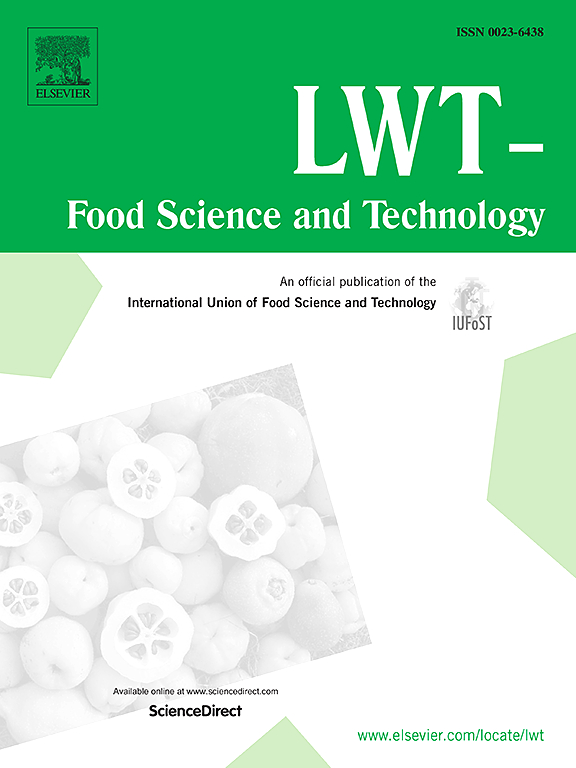Dendrobium officinale polysaccharide-EGCG complexes: Covalent and non-covalent interactions for enhanced antioxidant properties
IF 6
1区 农林科学
Q1 FOOD SCIENCE & TECHNOLOGY
引用次数: 0
Abstract
The objective of this study was to prepare Dendrobium officinale polysaccharide-epigallocatechin-3-gallate (DOP-EGCG) covalent complexes (COV) and non-covalent complexes (NON) to enhance the antioxidant properties of the polysaccharide. The COV samples were synthesized via free radical induction, whereas the NON samples were formed through physical mixing. The structure and properties of the complexes were then characterized. C-H bonds and hydrogen bonds were found to play a crucial role in the formation of the COV samples. The combination of DOP and EGCG reduced the crystallinity of the polysaccharide and altered the crystal morphology of the polyphenol. The thermal stability of the NON samples (99.2 °C) was lower than that of free DOP (103.0 °C), whereas that of the COV samples was higher (113.7 °C). Covalent binding increased the EGCG content of the complexes (112.9 ± 1.8 g/kg), thus improving its antioxidant properties. Indeed, the COV samples exhibited stronger antioxidant activities, as seen by an increase in free radical scavenging, reactive oxygen species quenching, and reducing ability, than the NON samples. The present study demonstrated that the formation of polysaccharide-polyphenol complexes could enhance the antioxidant properties of DOP, thereby expanding its range of application as a functional ingredient in foods and beverages.
铁皮石斛多糖- egcg复合物:共价和非共价相互作用增强抗氧化性能
本研究的目的是制备铁皮石斛多糖-表没食子儿茶素-没食子酸酯(dopo - egcg)共价配合物(COV)和非共价配合物(NON),以提高其抗氧化性能。COV样品是通过自由基诱导合成的,NON样品是通过物理混合合成的。然后对配合物的结构和性能进行了表征。C-H键和氢键在新冠病毒样本的形成中起着至关重要的作用。DOP和EGCG的结合降低了多糖的结晶度,改变了多酚的结晶形态。NON样品的热稳定性(99.2°C)低于游离DOP(103.0°C),而COV样品的热稳定性(113.7°C)高于游离DOP。共价结合提高了配合物EGCG含量(112.9±1.8 g/kg),从而提高了其抗氧化性能。事实上,冠状病毒样品比非冠状病毒样品表现出更强的抗氧化活性,如自由基清除能力、活性氧猝灭能力和还原能力的增强。本研究表明,多糖-多酚复合物的形成可以增强DOP的抗氧化性能,从而扩大其作为功能性成分在食品和饮料中的应用范围。
本文章由计算机程序翻译,如有差异,请以英文原文为准。
求助全文
约1分钟内获得全文
求助全文
来源期刊

LWT - Food Science and Technology
工程技术-食品科技
CiteScore
11.80
自引率
6.70%
发文量
1724
审稿时长
65 days
期刊介绍:
LWT - Food Science and Technology is an international journal that publishes innovative papers in the fields of food chemistry, biochemistry, microbiology, technology and nutrition. The work described should be innovative either in the approach or in the methods used. The significance of the results either for the science community or for the food industry must also be specified. Contributions written in English are welcomed in the form of review articles, short reviews, research papers, and research notes. Papers featuring animal trials and cell cultures are outside the scope of the journal and will not be considered for publication.
 求助内容:
求助内容: 应助结果提醒方式:
应助结果提醒方式:


